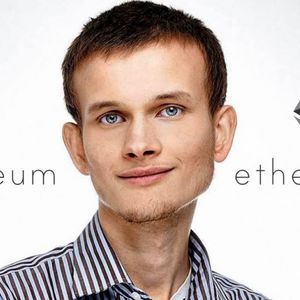Ethereum Founder Vitalik Buterin Presents a New Roadmap Focused on Increasing Gas Limits on Ethereum! Here Are the Details
2 min read
In a new proposal published today, Ethereum founder Vitalik Buterin outlined a roadmap that aims to address the challenges of scaling Ethereum Layer 1 (L1), focusing on increasing gas limits without compromising the ability to run full nodes. Vitalik Buterin Proposes ‘Partially Stateless Nodes’ to Help Ethereum Scaling Buterin’s post addresses a long-running debate in the Ethereum ecosystem: whether and how to increase the L1 gas limit, a move that could significantly increase network throughput but poses potential risks to decentralization and node availability. “The most common criticism of increasing the L1 gas limit, beyond concerns about network security, is that it makes it harder to run a full node,” Buterin wrote. Running a full Ethereum node, which today requires approximately 1 terabyte of state data and 500 gigabytes of additional historical data storage, is the cornerstone of the network’s trustless and censorship-resistant architecture. However, its high hardware requirements are making this system increasingly inaccessible to many users. To alleviate this, Buterin has proposed several short- and medium-term upgrades, including EIP-4444, which would limit the requirement for nodes to store historical data to just 36 days. This would significantly reduce disk space requirements and shift the burden of long-term historical storage to a distributed network of data providers. In the medium term, Buterin advocated for stateless validation, a method that allows nodes to verify transactions and blocks without storing the entire blockchain state. According to Buterin, this could reduce node storage needs by around 50%. He also suggested changes to gas pricing to encourage more efficient use of the blockchain, making data storage more expensive while lowering the cost of execution. The most notable innovation on Buterin’s roadmap is the idea of “partially stateless nodes.” These would act as a hybrid between full nodes and fully stateless clients. Rather than storing the entire state of the blockchain, these nodes would only hold a select subset of data. This way, they could continue to validate blocks and interact with the chain while consuming much less storage. “Partially stateless nodes have the potential to increase the L1 gas limit by 10 to 100 times,” Buterin said. These nodes will continue to contribute to decentralization and security while providing a much lighter participation in the network by using stateless validation tools such as zkEVMs or Merkle proofs to verify data integrity. *This is not investment advice. Continue Reading: Ethereum Founder Vitalik Buterin Presents a New Roadmap Focused on Increasing Gas Limits on Ethereum! Here Are the Details

Source: BitcoinSistemi



